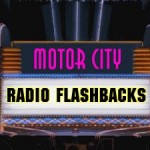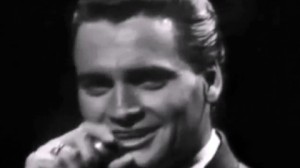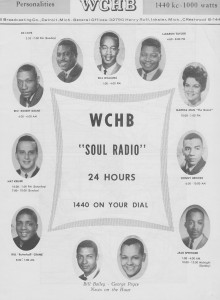 From the MCRFB NEWS archives: 1966
From the MCRFB NEWS archives: 1966
Blue-Eyed Soul Artists Herald Musical Integration on Airways
NEW YORK — Hot 100 radio stations have been “borrowing” the most popular tunes of its R&B sister stations for the past few years and the trend, if anything, is increasing. Some rock ‘n’ roll outlets have, in fact, gone so far as to hire Negro air personalities and the reason has been two-fold. For one thing, these particular personalities were top flight: Chuck Leonard at New York’s WABC and Larry McCormick at Los Angeles KFWB. Second, there was the feeling that they could appeal to a wider audience.
But this past year marked a turnabout for R&B stations. It happened quite by accident; some of the news artists being programmed by program directors at the nation’s major R&B stations such as WWRL, New York; WDAS, Philadelphia; WOL, Washington; and WLAC, Nashville, turned out to be white.
Frank Ward, general manager of WWRL, puts it this way: “You should have seen the face of Rocky G when he found out who the Righteous Brothers were!” Rocky Groose is program director at the New York outlet. Many other R&B outlets were also fooled by the “soul” sound of the two artists.

Georgie Woods, an air personality with WDAS, Philadelphia, came up with the term “blue-eyed soul” to cover these white artists now receiving airplay on R&B stations. Besides the Righteous Brothers, once the barriers were down, R&B stations began spinning any white artist — the big name ones — who could be said to have “soul.” In other words, sound like a Negro. These “soul” artists were many and the term became quite loosely used; for example: Sonny & Cher, the Beatles, Tom Jones, Sam the Sham, Barry McGuire, Roy Head.
What it actually meant was that R&B stations were trying to give rock ‘n’ roll outlets a run for their money . . . to hold on to their audiences. To get involved in the action, many British groups are appearing now — American groups, too — with the R&B sound.
The next step?
Some R&B stations decided to concentrate on appealing to both white and Negro audiences. Instead of aiming at an ethnic group, these stations began to realize that R&B music had a basic appeal. So, they integrated their air personality rosters, once almost almost a private domain of the Negro. There were some white deejays in the field — John Richbourg at WLAC, Nashville, and Porky Chedwick at WAMO, Pittsburgh. But they were rare. Then, KYOK, Houston, hired Al Gardner as program director; KGFJ in Los Angeles has two white deejays, WCIN, Cincinnati, not only went with an integrated staff, but plays such artists as Bob Dylan, Brenda Lee, Billy Joe Royal, and the Rolling Stones . . . . anyone that has “a little bit of soul.” WAKE, Atlanta, which changed its call letters to WIGO, has an integrated staff. WLOU, Louisville, has had an integrated staff. So does WLTH, Gary, Indiana.
It is the integration of music that has contributed to the integration of staffs, believes George Woods of WDAS, Philadelphia. Rudy Runnells of WOL, Washington, feels that the Negro audience is no longer a specialized “in” group. “Musically, they’ve grown out of the strictly heavy-accented R&B field limited only to Negro artists.”
KGFJ, Los Angeles, keeps as pure “soul”as possible, but program director Cal Milner says high general market audience ratings indicate the station is being listened to “by the white kids in order to hear R&B records early . . . we’re playing them about 10 days earlier than the rock stations.” Hunter Hancock and Jim Woods are the blue-eyed soul deejays at KGFJ; Hancock is currently rated the No. 3 air-personality in the market influencing R&B record sales. Milner says Hancock sounds “ethnic” on the air.
James Whittington, operations manager and program director at Atlanta’s WIGO, said his station had a different situation that brought about its integrated air staff. When the station changed formats recently to R&B, it kept on a white deejay, Tommy Goodwin, because of his tremendous following. Goodwin is the drive time personality and Whittington says, “he’s worrying heck out of rock ‘n’ roll personalities by playing R&B records.”
WLTH, Gary, Indiana, set out deliberately to aim at both white and Negro teenagers with an integrated play list as well as an integrated staff. The station manager, George Corwin, previously worked with WSID, Baltimore, an R&B outlet. END
___
(Information and news source: Billboard; October 22, 1966)

MCRFB Addendum: In covering 1966 Detroit R&B radio stations, WJLB-AM and WCHB-AM were the two premier soul stations on the radio dial. But these two R&B stations seemed always well ahead in playing the newest soul records and albums before they would hit the charts, at times weeks before other local popular Detroit Top 40 stations would find those selected R&B hits on their respective radio playlists.
In was known also that during the 1960s, WJLB and WCHB also held a respectable Detroit (non-black) radio audience. And one reason was due in part that by 1966, both stations tended to first introduce and promote at the earliest local R&B hits, the newest soul hits and albums produced by many independent and major record labels. And of course, there was Motown Records and Stax as well. By 1966, soul music, or R&B, would comprise as much as up to one-third of the singles played in mainstream top 40 radio stations around the country.
![]()
